
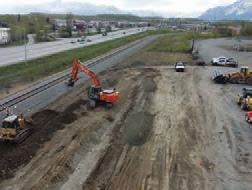

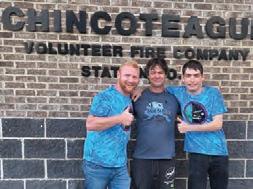










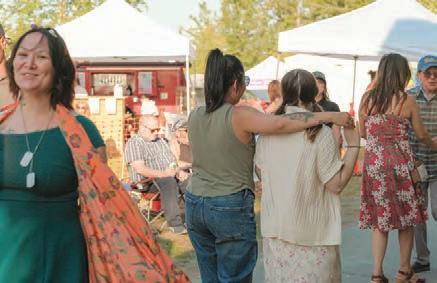
Burkhart
A
Media
People’s Paper 95.5 The Pass KNLT-FM
Every summer, Iditapark in Wasilla becomes something special. Music fills the air, local vendors line the paths, and families, friends, and neighbors gather for one reason—Music in the Park. It’s more than just a good time. For us at MAKE A SCENE Media, it’s personal. MAKE A SCENE Media—home of this publication you’re holding (The People’s Paper), Make A Scene Magazine, 95.5 Hatcher Pass Radio KNLT-FM, and a handful of other community-driven projects—has been helping put on this event for a long time. But it’s more than just an event we help with. It’s part of our origin story.
Music in the Park was our first real project—before the paper, before the magazine, before the station. That very first stage gave us a reason to believe in what we were doing. It planted the seed for everything MAKE A SCENE has become and will become.
And let’s be clear—this is a City of Wasilla event. We’re proud to help organize and facilitate it, but it’s the City that makes it happen. Their continued support—along with a lineup of amazing sponsors and musicians—is the reason this event remains free and open to everyone.
A huge thank-you to The City of Wasilla, MTA, Alaska Outdoor Council,
College, Alaskan Sweet Vapes, Geico Agent Monica Johnson, Alyeska Tire, Division of Forestry and Fire Protection, Spunky Monkey Alaska, Brown’s Electric, the MEA Charitable Foundation, Bearpaw River Brewing Company, Big State Beverages, MATSU TEAMS, and more.
This year’s concert series brought a strong mix of local musicians and visiting acts. From the Mat-Su Concert Band and Jerry Wessling Band to the Harp Twins and H3 Hawaiian Reggae, each weekend brought something new to the stage. The July 4th finale and talent show, alongside the City of Wasilla parade, capped things off in true hometown style.
If you’ve ever been to Music in the Park, you get it. There’s something about watching live music outside, surrounded by your neighbors, unplugged from everything else. It’s a reminder of what community really means.
That’s the heart of MAKE A SCENE Media and The People’s Paper— giving a platform to local voices, stories, and creativity. Whether it’s on stage, in print, or on the radio, we’re here to amplify what matters to the people who live here.
So, if you came out this year—thank you. If you missed it, we hope to see you next summer. And if you want to get involved as a vendor, sponsor, or performer, we’d love to hear from you.
Visit musicintheparkwasilla.com or call 907-373-2698 to be part of it, and help us MAKE A SCENE! We’ll see you at the park.




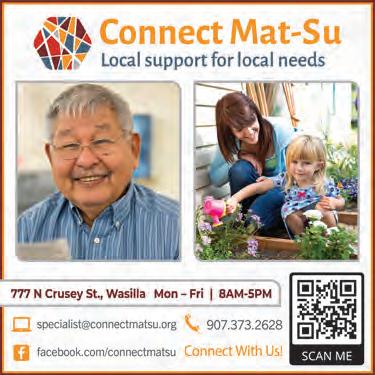



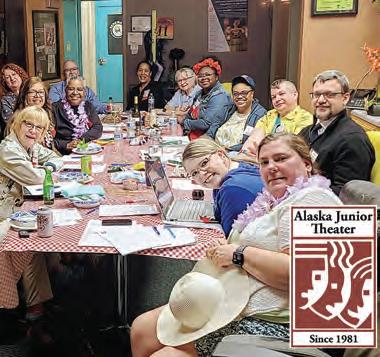



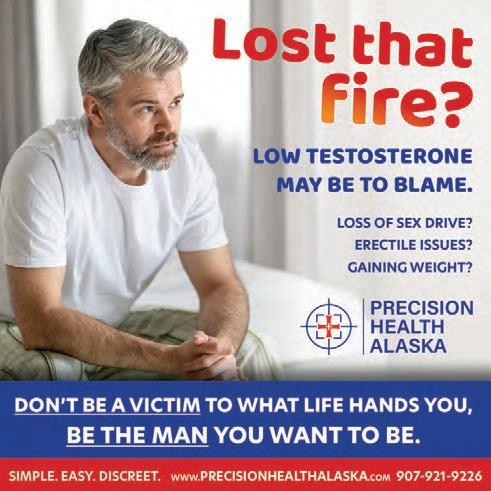
Contributed by Crystal Nygard, City of Wasilla
As we look toward the future of Wasilla, now is the time for residents and businesses to come together and participate in a crucial initiative: updating the Comprehensive Plan for our city. This plan is essential for addressing the unique challenges and opportunities that come with our growth and development.
Located 40 miles north of Anchorage, Wasilla is a thriving hub in the Matanuska-Susitna Borough, serving both locals and thousands of visitors who enjoy our beautiful outdoor landscapes year-round. As our population continues to grow— outpacing state averages for over two decades—it’s vital that we have a clear vision for the city’s future.
Wasilla is unique among Alaska cities: the borough provides key public safety services such as fire; Wasilla has the only Economic Development Administration-approved regional Comprehensive Economic Development Strategy (CEDS), a blueprint for economic vitality; the city is incorporated as a First-Class City with a Council-Mayor form of government, providing the following public services: City Clerk; Code Compliance; Economic Development; Finance; Library; Parks and Recreation; Municipal Airport; Plan-
ning; Police and Emergency Dispatch; and Public Works. Currently, over 5,800 businesses and 115+ franchises operate within the city limits. The City collects a sales tax of 2.5% and no property tax. A planned expansion of the City-owned Wasilla Municipal Airport runway from 3,700 to 6,000 feet is underway. The City carries no debt and has several capital projects that are now “shovel-ready” and can be built as funding becomes available. In May 2023, the City Council adopted a city budget that included $22M in capital expenditures. Matching state and federal funds will allow these projects to total an estimated $57M, including the airport runway extension and initial upgrades to water and sewer infrastructure.
The last update to our Comprehensive Plan was in 2011, and as mandated by Alaska State Statutes, we must revisit and enhance this guiding document every ten years. The updated plan will focus on several key areas including: transportation goals that support current and future development through an efficient, inclusive, and well-connected system for all users; land use planning to address necessary infrastructure upgrades, simplify zoning and development codes, and enhance flexibility; reassessment of the Downtown Overlay to align with and support the
city’s future vision; community asset goals to improve parks, library, museum, and other facilities to promote economic development and connection; economic vitality goals focused on critical infrastructure, airport expansion, entrepreneurship, tourism, and high-impact projects; and intergovernmental coordination goals to strengthen partnerships with local, state, and federal agencies, tourism groups, cultural organizations, visitor services, and public-private coalitions to support a unified vision for Wasilla.

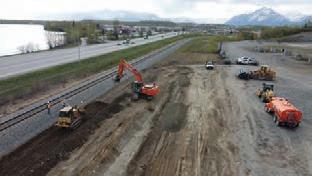
The success of this Comprehensive Plan hinges on active participation from our residents, businesses, and stakeholders. Your insights and experience are invaluable in creating a vision that meets our community’s needs for the next 20 years. This is your opportunity to voice ideas, concerns, and aspirations for Wasilla’s future.
We invite you to be part of this essential process. Visit wasilla2045.com to learn more about the planning process and
Contributed by Cindy Smith
The Palmer-Wasilla Highway has a new business opening this July that promises to become a destination hallmark for vintage curators across the state. Winter’s Cache is relocating from downtown Palmer to its new location at the Golden Valley Plaza. Cindy Smith’s decision to move her storefront is prompted by an opportunity to expand the store’s inventory with another local vintage pioneer, Shaina Lopez-McKeown. Together, the two women behind the collaboration will open their doors on July 19th.
Once unlocked, the experience of entering the store can only be compared to stepping into a time
capsule of 1950s glamor and kitsch. Lights upholding the iridescence of carnival glass will draw you in. Rare and unique mannequins, such as Monique in her sequined gown, may greet you. But it will be the refined quality of the high-end vintage and antique collections available for purchase that keep your attention. From rhinestone brooches to pristine Pyrex mixing bowls, the shop doesn’t lack for quality or variety.
You are invited to partake in the Grand Opening celebration for the Winter’s Cache vintage store on July 19th, located at the Golden Valley Plaza, 5031 E Mayflower Lane. Doors open at noon. Refreshments available. Look for our lady in the window and balloons at the door.
how you can contribute. Whether you’re a longtime resident, a new business owner, or a community partner, your involvement is crucial in shaping a thriving future for Wasilla. Together, we can create a Comprehensive Plan that reflects our community’s values and goals—ensuring Wasilla remains a vibrant, accessible, and prosperous place to live, work, and play.







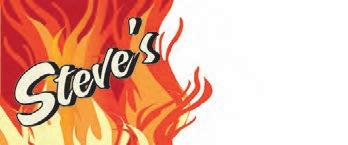






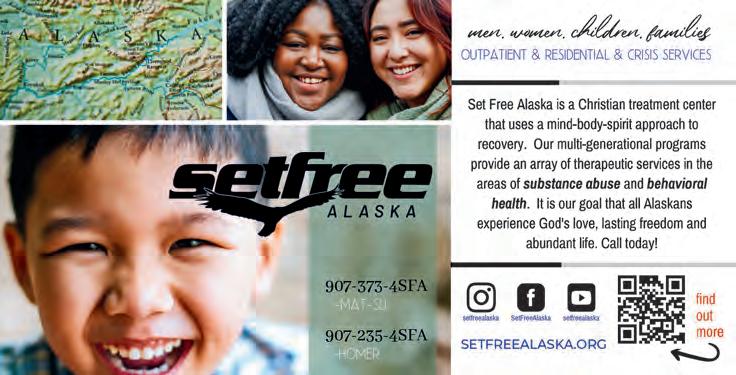















Contributed by Nick McDermott
How do you figure out how big something is if it’s the size of a planet? Thanks to students at Mat-Su College and the University of Alaska Anchorage, we have the answer and method that will be used by NASA to train future astronauts and rocket scientists.
The team, made up of Justice Darby, Kenny Sparks, Walter Nagle, and advised by Dr. Dan Nichols, Associate Professor of
Physics at Mat-Su College, created an experiment that was launched into space at 5:30 a.m. Eastern Time on June 26, 2025.
Dr. Nichols joined Darby and Sparks at the launch site at Wallops Flight Facility.
Dr. Nichols says, “I had the honor of watching my students grow into highly capable engineers through their work on this eight-month project. They combined their skills in electronics, sensor integration, software development, and data analysis to design and execute a successful experiment.”
The scientific community already has a generally accepted number for the mass of our planet; in fact, it is 5.972 × 10^24 kg. What’s special about this project is that the team got the right answer with their own method and a new sophisticated computer program to analyze all the data collected as the rocket raced out of our atmosphere.
Dr. Nichols says, “The analysis software developed by these students will be used by future generations of students work-

students sure proved they have the right stuff, and if you search for it, you can find a video of the rocket launch online.
For more information about programs at Mat-Su College, visit matsu.alaska.edu.
Contributed by Bridgette Preston
In honor of the 90th anniversary of the Matanuska Colony project, Grandmother Raven Productions, the Palmer Historical Society, and the Palmer Pioneer Cemetery Association present Season Two of Stories in Stone: Palmer Pioneer Cemetery Walking Tour.
The next set of tours is July 28 and 29
at 7 p.m. Tickets are $15 and limited to 40 per night. The June tour sold out quickly—don’t miss your chance!
This year’s tour, Ninety Years Later: From Private Spaces to Public Places, features 12 Matanuska Colony-era residents—homesteaders and colonists whose homes, barns, and properties helped shape the Palmer we know today.
To get your ticket, visit: eventbrite.com and search “Stories in Stone.”
All proceeds benefit the Palmer Historical Society and Palmer Pioneer Cemetery Association.
Be part of Palmer’s living history—join us in honoring the pioneers who turned private dreams into public treasures.
Contributed by My House
MY House is pleased to announce the official name of its youth treatment program, which will hereby be known as “Jeff’s Path.” The name is in honor of the late Jeff Overstreet, whose professional and personal contributions to MY House and its staff are immeasurable.
“The mission of Jeff’s path is to guide individuals through the winding road of Recovery with compassion, purpose and
strength; honoring the spirit of movement, resilience and personal transformation,” said Bryan Fields, the Behavioral Health Program Manager at MY House.
“This name pays homage to a long-time member of our MY House family, while providing a welcoming name to individuals considering a treatment opportunity with MY House.”
Jeff’s Path offer’s treatment services to individuals 18-25 years old. Clients are surrounded by their peer group in a supportive environment, allowing them to build connections essential to their recovery. They also receive traditional treatment services while simultaneously participating in job-training and education completion, helping provide long-term stability. Those interested in treatment with Jeff’s Path can contact MY House via phone (907)373-4357 or email at info@myhousematsu.org.













Contributed by Jennifer Christiansen
In the heart of Alaska, a quiet but deadly crisis is taking lives at an alarming rate: the fentanyl epidemic. Every day, families are shattered, futures are lost, and communities are left searching for answers. In response to this growing emergency, The E.A.R. Project Podcast was born—a grassroots initiative dedicated to Education, Advocacy, and Recovery in the fight against fentanyl.
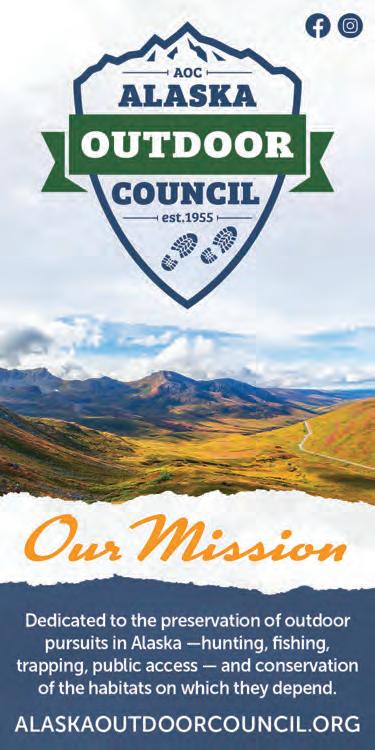
The mission of The E.A.R. Project is simple yet powerful: to save lives by raising awareness, breaking the stigma of addiction, and providing real tools for prevention and recovery. Founded by Karl Yost and Frank Alvarez, The E.A.R. Project is not just a podcast—it’s a movement aimed at equipping individuals, families, and communities with the knowledge and hope they need to combat this devastating crisis.
We believe that education is the first line of defense. Our episodes dive deep
into the realities of fentanyl: what it is, how it affects the brain and body, and why it has become the deadliest drug epidemic in modern history. We bring together addiction specialists, healthcare professionals, law enforcement, and individuals with lived experience to have open, honest conversations. By shining a light on the facts and stories that too often remain in the shadows, we empower listeners to recognize the dangers and make informed choices.
But we don’t stop at education—we advocate for real change. The E.A.R. Project collaborates with schools, policymakers, treatment providers, and community leaders to push for more accessible treatment options, early intervention programs, and policies that support recovery instead of punishment. We believe that every person deserves the chance to reclaim their life from the grip of addiction. Perhaps most importantly, we are dedicated to recovery. Through heartfelt in-
terviews and practical resources, we offer hope to those struggling with substance use and their loved ones. Recovery is not only possible—it is happening every day, and we are here to remind people that they are not alone in their journey.
Our home state of Alaska has been deeply impacted by the fentanyl crisis, with overdose deaths rising year after year. We have seen firsthand how this crisis touches every corner of our communities, regardless of age, background, or circumstance. The E.A.R. Project stands as a voice for the voiceless, a lifeline for those in despair, and a rallying point for those who believe that together, we can turn the tide.
We invite you to listen, share, and join us. The fight against fentanyl is not someone else’s battle—it is ours, as neighbors, parents, friends, and citizens. With education, advocacy, and recovery at the heart of what we do, The E.A.R. Project Podcast is proud to stand on the front lines of hope.




SATURDAY AUGUST 2ND 9AM - 9PM

SPONSORED



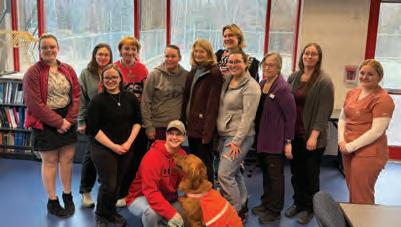

Contributed by Nick McDermott
Mat-Su College Veterinary Sciences program got a checkup of sorts from (R-AK) Senator Lisa Murkowski. While on a short break from Congress, Alaska’s senior senator toured the College’s new Veterinary Sciences classrooms and took time to meet with students, faculty and staff.
Mat-Su College’s Veterinary Technology Program is the is the first for the state of Alaska and was launched at the start of the Fall 2024 semester. In the animal medical world, a Veterinary Technician is the human equivalent of a hospital nurse. According to program Co-chair Rebecca Walker, the program is hitting expected
milestones and “We’re pleased to have the support of the State of Alaska, the Mat-Su Borough and the veterinary community.”
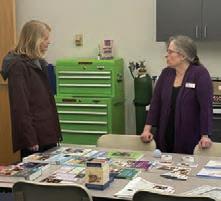
Alexis Hinther is one of the dedicated students working her way through the program. “I was glad that Senator Murkowski was able to come and visit with our cohort as well as tour our facilities.” She continued, “It makes me beyond happy that we have supporters all over the state for a program that is teaching the next generation of Veterinary Technicians.”
Contributed by Mari Jo Parks, M.Ed, Career and College Coach
Welcome back to school. Oh, the excitement. Oh, the dread. Oh, the unknowns. And there are so many opportunities and things to do.
Mari Jo Parks, College and Career Coach, offers some advice for high school students and their parents. She has recently published a book, Guide to Your Future: A Plan for Life After High School. It helps students on their journey to find the answers they have about the future, including finding the right college or educational opportunity, financial aid, scholarships, and even how to find a job. For more info, visit her website at findingyourfuture.net. Mari Jo also offers private one-on-one sessions to help students on their journey. Here are some of her beginning-of-theyear suggestions.
SENIORS’ STRATEGY: It is your senior
year! There are important things to do to start the year out right. Organization is key—there will be many deadlines to keep track of. Create a master calendar including important dates. Check the school calendar, activities, college and career fairs, and fun. Put it somewhere you can see it on a regular basis. Get a notebook or journal to write down your plans and ideas. Keep track of the people you talk with about schools, scholarships, and other contacts. Explore the educational options to include college, trade school, apprenticeships, and short-term training. Talk to your counselor and everyone you know to learn more about your options. Check your transcript and credits so it is ready for sharing with schools. Go to school events, participate in sports, or theatre or other clubs. One more thing: don’t forget to plan for your senior portrait!
JUNIOR JOURNEY: Your junior year is one of the most exciting times of high school.
You have certain opportunities and time to plan for your future. Many of the recommendations listed for seniors are things you could also be doing. The good news is you have more time to explore. Being organized is a very valuable skill. Try different ways to organize and decide what works for you. Do you need to have a whiteboard to list your to-do list, a dayplanner, a system in your phone, etc.? Learn something new and keep a log about it. This will be very valuable when you try to decide what to do for a career or need to write an interesting essay. Go to school events. Attend college and career fairs. Write a list of interesting careers and research them.
SOPHOMORE & FRESHMAN DISCOVERY: High school can be overwhelming, but there are ways to make it better. Try to take things one step at a time. Do not be afraid to ask for help. Get organized. Keep each class in its own folder. Make a schedule and try to stick to it. Research specialty
Contributed by Teresa Roy
Cover Ups Window Fashions, Palmer
As a retail business owner for over 30 years, I’ve witnessed a lot of changes in the marketplace and buying habits of consumers. Recently, there has been an important shift in attitudes toward consumerism—the idea that we must constantly acquire new things. This has been driven in part by the depletion of natural resources, advocating for conscious consumption and addressing waste. This change made me consider how my business could better reflect my own values of wasting less and providing quality over quantity. It made me evaluate the items I chose to offer for purchase, and a recommitment to those vendors whose values of quality align with my own. Selling and fabricating window coverings has been the cornerstone of my business my entire career. Early on, when I made a conscious decision to sell a quality product, I chose Graber blinds, a division of Springs Window Coverings. All the components are aluminum, ensuring durability and longevity—unlike vinyl, which eventually cracks
or is affected by temperature. They can be safely cleaned without compromising the integrity of the blind. My expectation is that once I install that blind in your home, you may have it for decades. Springs Window Fashions is also a company committed to Best Experience; if there is a problem, they fix it.
For example, the mechanisms that raise and lower the blind have a lifetime warranty. If a shade is difficult to raise or lower, it will either be replaced or repaired. Not all blind companies can make that claim. I have seen repeatedly Graber stepping up to honor that promise. Our blinds can also be repaired—if a string breaks, it can be fixed—keeping things out of the landfill. Surprisingly, that’s not the case for all manufacturers. Springs Window Fashions has won awards for their commitment to sustainability and environmentally friendly practices.
The other item I choose to carry in my retail business is Annie Sloan Chalk Paint. I have also always had an interest in restoring antiques and what became known as re-purposing—the idea of making an
existing item better. I grew up in a home without a lot of money to buy things. We did without or made what we needed. But I always wanted to create a space filled with items that meant something to me, were beautiful, and unique. When on a budget, that can mean using what you already have or not purchasing brand new. Thrift stores and garage sales are wonderful places to find that perfect piece of furniture to make uniquely yours. This belief led me to start researching paint products that were beginning to enter the market specifically for furniture.
According to Program Co-Director Judy Montalbano says the senator “was very supportive of the program and seemed impressed by what we showed her.” She adds, “The senator spoke encouraging words to the students and took time to pose for a picture with them.”
Alexis and her classmates are about halfway through the program at Mat-Su College and the next group of students will start once they finish. If you’re interested in working with pets and their owners, Alexis says this could be a good time for you to start working on your general education classes and other program prerequisites, so you can really focus on your future career. For more information about Veterinary Sciences at Mat-Su College, visit matsu. alaska.edu/academic-programs.
classes at your school or in the district. Find out what you have to do to take those classes. Write a list of careers you think would be interesting. Research them to get more information.
PARENT NOTES: Being a parent of a high school student can be tough. I have talked with numerous parents about the anxiety they are feeling as they help their students plan for their future. The main question is, “What should we be doing to help our high school student?” There are no simple answers and each student and family is different. You will be getting advice from many different sources, you will watch your student’s friends make decisions, and your student will change their mind many times. It is all OK. Try not to stress! I know that is easier said than done. The reality is that stressing is not changing anything, and it might be getting in the way. The most important advice is to help your student do what is best for them. Keep in mind that your student’s journey is a path, not the end of the road.

Annie Sloan Chalk Paint is the pioneer in no-prep, environmentally friendly furniture paint. Cover Ups is the only distributor of this marvel of paint in Alaska. It is water-based, has minimal VOCs, and meets
the highest quality indoor air ratings. Annie’s business model mirrors my own, as we advocate saving furniture from the landfill and giving those items new life in a reimagined way. Its unique makeup eliminates the need to use chemical strippers or do a lot of prep work before getting to the fun part—creating something unique to your project. If you have a project you’re considering and trying to be more mindful about your purchases, please reach out to us at Cover Ups Window Fashions. www.coverupsak.com
Contributed by Deborah Waisanen
by Susitna Rotary.
Thank you to Palmer’s Three Bears for providing this opportunity to sell their products after months of hard work. Additionally, thank you to the patrons for browsing their creations, making purchases (or even just a kind comment), or donating money—especially to our foreign ex-


Contributed by Jovan Archuleta, T.E.A.M.S. Events & Experiences
The wonderful weather this July brought an incredible energy to our community. As the joyful sounds of parades and festivals echo through the long daylight hours, they serve as a powerful reminder of the revolutions that define us. Our nation was born from a private struggle that grew into a public declaration of independence. Today, a local initiative is highlighting the personal revolutions of hope and connection happening in our neighborhoods—creating support for our youth, veterans, and those navigating sobriety.
The inspiring energy was everywhere.
From the cheers at the Highland Games to the rhythmic slap of shoes at the Get Moving Mat-Su Fun Runs, the spirit of togetherness is back. The Links Resource Center provided a wonderful setting for residents and providers to connect, while upcoming events like the Denali Family Services & Thrive Mat-Su appreciation BBQ and REACH 907’s therapeutic camps continue to build support for our community’s youth and foster families.
Amidst the fantastic celebrations at Wasilla Music in the Park and the 4th of
July Parade, it was beautiful to see quieter connections also taking place. In peaceful spots, small groups of teens checked in with each other, friends connected over chess at Joe and Charlie’s, and AMVETs members shared stories and laughter, all demonstrating that community happens in both boisterous and quiet ways.
The message this July was clear: our shared belief in freedom and community is where we find our greatest strength. True independence isn’t found in isolation, but in the power of supporting each other.
Every revolution begins with a personal choice. Whether it’s the quiet resolve of the Founding Fathers or an individual’s decision to reclaim their life, the first steps are often taken alone. But no revolution is won alone. Lasting freedom comes when we create safe, supportive environments that invite everyone to step forward into a welcoming community.
This philosophy is the bedrock of the ‘There is no ‘I’ in Team, but it’s missing U’ campaign. As we wrap up our summer activities, let’s keep this spirit of connection going.
As a combat veteran, I sacrificed time with my family for the ideal that all families
Contributed by Debra McGhan
Sometimes you can do everything right and still have things go horribly wrong. Friends learned that lesson first hand while on a recent bicycle outing through their small town.
“We were having the best day,” said 12-year-old Avery. “Dad and I were on a bike ride and had stopped for lunch at the golf course. We had lunch and when it was time to go, I wanted to ride longer so Dad said we could go the long-way back home through town.”
They were sporting bright clothing and both wore bike helmets. They were following all the rules of the road when they came to a busy intersection and stopped for the traffic light. When the light changed and indicated it was safe, Dad started across the street.
“There was a truck in the right lane and I tried to get the driver’s attention as I started past him but the windows were so dark I couldn’t really see him.”
As Avery watched in horror, the truck started moving and ran right over her father, knocking him to the ground and pinning him underneath. She screamed and shouted, fortunately getting the driver’s attention so he stopped.
To her absolute shock, instead of getting out of the truck to apologize and lend aid, he rolled the window down and started shouting at her dad saying he was an idiot and should have waited.
“I was lying under the truck and thought, wait, what? We were crossing in a designated crosswalk on a green light that gave us the right of way, so how did we mess up?”
He managed to pull out his phone and dialed 9-1-1. To his great relief, the local police, ambulance, and emergency support showed up within a few minutes to lend aid. This situation could have turned out so much worse. Fortunately, the injuries proved non-life threatening and he recovered with-
in a few days. But the lesson was clear. Even when you do everything right, things can still go very wrong.
When asked what lesson she had learned, Avery was quick to respond. “I realized there are a lot of people out driving around who are totally oblivious to what’s really going on.”
Her dad said the lesson for him was that we must always be prepared and remain hyper-vigilant. Had he not been dressed appropriately, leading the way and moving slowly trying to get the driver’s attention, he could have been crushed and died. Or worse, it might have been his daughter.
Mike Buck with Alaska Safe Riders teaches these lessons in every class he gives. “Things can be very unpredictable. It’s up to each and every one of us to pay attention and do everything we can to make sure we are prepared and alert. I tell all my students, ‘adjust your speed to your vision’.”
Buck learned that lesson first-hand the hard way. While riding the Iron Dog race course one year, he was fighting a loose buckle on his helmet.
“There were three riders ahead and two behind me, so I told the others in my group to ride on ahead and I’d catch up,” said Buck.
After fixing the buckle problem, he set out after his partners.
“The light was flat and I was going full throttle when I slammed into an unseen ice pressure ridge and was launched way up into the air, landing with bone crushing pain on my back at least 30 feet from my sled.
“I had to lay there for a while because it totally knocked the wind out of me and I could hardly move,” he recalled. “I knew I’d messed up. It always makes you feel foolish when you don’t take your own advice. I was riding faster than I could react in bad light. I was just focused on catching up with my team. It’s a lesson I think is so important to share with others.
could enjoy their time together in peace. Some of my friends are no longer here to join in, so I now focus on creating opportunities for others to share precious time together and connect with people who share their passions. Instead of just saying “Thank you for your service,” let’s show our veterans their sacrifice has built a community worth fighting for. Let’s honor our heroes by supporting our neighbors fighting their own battles today.
The courage it takes for anyone—a teen, a veteran, a person in recovery—to ask for help is revolutionary. Let’s keep our community a safe harbor where that courage is rewarded and people are met with overwhelming support.
You can be the community our local heroes need.
Champion Our Veterans: Uplift veteran-focused organizations like the VFW Post 9365, the American Legion Jack Henry Post 1, and The Mission Continues. Your time and support are tangible ways to show your gratitude.
Uplift and Support Sobriety: Champion organizations providing a lifeline for recovery. Help build a stigma-free community where every step is celebrated, and support resource fairs and camps held
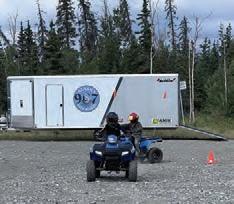
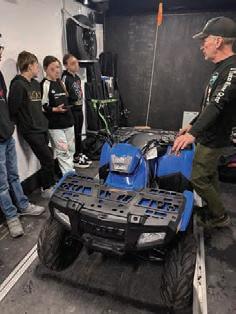
“I know I was fortunate because I was well prepared. And while I was injured, I was able to get up and managed to get back on my sled and ride the 100 miles to the next checkpoint. That fall ended my riding for the rest of the race and for a few days after. It also left me feeling pretty humble.”
by groups like Denali Family Services and REACH 907.
Celebrate Freedom at Local Events: Immerse yourself in the sounds of an Alaskan summer. As July winds down, the festivals get bigger! Head to Ninilchik for Salmonfest (August 1-3, 2025) and get ready for the Alaska State Fair, a massive celebration of Alaskan life.
Engage in Community Connection: The spirit of summer shines at local BBQs and sports tournaments. Participating and cheering at these events builds the vibrant, welcoming atmosphere that makes our community strong.
Help Build Our Digital Hub: Get involved with our new online community tools. Offer suggestions, add information to the linktr.ee/orchard collaboration space, and share your events with The Community Calendar to help us connect our community. This July, as we celebrate our nation’s independence, let’s also celebrate the revolutionary courage of our neighbors and build a community where no one walks their path alone.
Web: www.matsuteams.com
Phone: 907-215-2949
Email: events@matsuteams.com
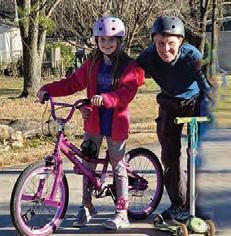
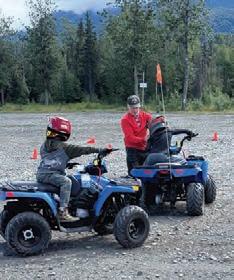
Always remember, you can do everything right and still have everything go very wrong. It’s important to be prepared, stay alert and be hyper-vigilant, especially when trail or road conditions make visibility a challenge.
July is ATV Safety Awareness Month so take the time to get educated and set a good example for those younger riders who look up to you and depend on your advice to remain safe and healthy. Our chances of surviving a bad situation might be only because we did everything right. You can learn more and find training opportunities at AlaskaSafeRiders.org.






We’re more than a community paper! We also run 95.5 The
Contributed by Alys Culhane
The Bright Lights Book Project has been in existence now for five years and a nonprofit for three. We’ve been located in the former banquet room of the historic Eagle Hotel for two years.
Early on, I was told often about the importance of partnerships—alliances with corporate and nonprofit entities strengthen bonds, create community, and lead to organizational growth.
At the time, this sounded nice but felt abstract. Then I watched nonprofits like Kid’s Kupboard thrive and realized partnerships were key to their success.
I also learned partnerships don’t just happen—board members and executive directors have to work at it. That said, some happen serendipitously.
A few weeks ago, I was sorting books at what we now call the BLBP Literacy Center when a passerby stopped in. After I explained the project, she mentioned that the nearby Bleeding Heart Brewery had a bookcase that might need books.
I drove over right away. It was Monday—and the brewery was closed. I went around back, opened a large metal door, and stepped inside. Two individuals sat at a table with beers in hand, clearly deep in discussion.
I considered leaving, but reminded
Contributed by Michael P. Carson, MyHouse of Mat-Su and Chair of the Mat-Su Youth and Behavioral Health Task Force
Nationally, teen opioid misuse has declined (Addiction Policy Forum, March 6). Unfortunately, that is not the case in Alaska. Since 2019, Alaska has seen no significant decrease in the misuse of prescription pain medications such as Percocet, OxyContin, Hydrocodone, and codeine. According to the 2023 Alaska Youth Risk Behavior
myself I’d come this far—and that sharing books with brewery patrons was worth the momentary awkwardness.
So I launched into my elevator speech: “We envision the power of literacy to change lives. We are doing this by making books accessible to young and old, locally and statewide. I just heard that you have a bookcase for customers. Would you like us to stock it?”
Co-owner Zack Lamphier said the bookcase was full—but I was welcome to fill it.
Then I noticed someone else at the table—AK Nomad Cinematics owner Logan Dillinger.
Logan and I go way back. His wry humor shows up in his films Sudsy Slim Rides Again and The Cremation of Sam Magee. He’s also filmed me distributing books in various places.
“Hey Alys,” he said, “We’re making a podcast.”
I replied, “Hey, you need to come and check out our place.” (He hadn’t yet visited the Literacy Center.)
I thanked Zack and his co-owner Stefan Marty, and started to leave—accidentally walking into a phone booth. Zack pointed to the right door, and I exited with a laugh.
Once outside, I realized I hadn’t given them BLBP bookmarks. I grabbed some
Survey, 13–15% of youth reported taking pain medications without a prescription or differently than prescribed—misuse— with females at the higher end of that percentage. Additionally, 6% of youth reported currently misusing pain medications within the past 30 days. No matter how you look at it, this is too many youth misusing pain medications. Even small amounts of opioid misuse put youth at serious risk of harm. These drugs—whether prescribed or illicit—are highly addictive and can alter brain function, impair decision-making, and disrupt the brain’s reward system. With no significant decline in opioid
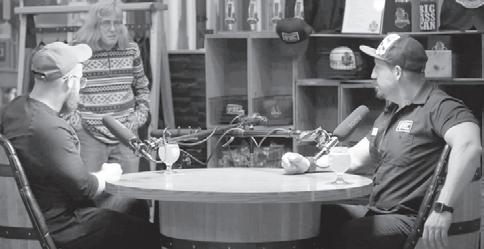
from the car and returned, only to find the door locked. I slipped them underneath and left.
The next evening, Logan sent me the full podcast. After I’d left, Stefan had commented, “Nice lady, she’s on a mission.” Both men were surprised to see the bookmarks slide in under the door. Zack picked them up, and they examined them together.
Mission accomplished.
I didn’t realize at the time, but I had inadvertently planted the seeds for a new partnership. The next day, I returned (during open hours) and entered through
misuse among Alaskan youth, we must ask: Do teens believe prescription medications are safe, even when misused? Are they using opioids as a way to cope with stress, grief, family disruption, or personal trauma? Do youth have an unrealistic and mistaken belief that negative consequences are less likely to happen to them?
If a young person starts seeking more pills, the risk becomes severe—even deadly. We know 7 out of 10 illicit pills on the street may contain Fentanyl, a powerful synthetic opioid. Just 2mg—an amount small enough to fit on a pencil tip—can be fatal. Despite these risks, the majority of Alaskan youth are making healthy, drug-
the front. Turns out Zack had underestimated their shelf space—between the two bookcases, they took six bins of books. Logan hinted that I might make cameo appearances in future Bleeding Heart Brewery podcasts. I’m looking forward to it—because together, both the BLBP and Bleeding Heart Brewery will gain exposure and move closer to our shared goal: building a stronger sense of community.
You can see Bleeding Heart Brewery’s first podcast episode, “The Origin Story,” on YouTube. Learn more about the Bright Lights Book Project at brightlightsbookproject.org.
free choices, and we should celebrate that. But the reality and fact remain: One Pill Can Kill. We must ensure all Alaskan youth understand the real and life-threatening consequences of opioid misuse. This starts with education, including open, honest conversations—early and often. Misuse can lead to addiction, and addiction can change a life forever. Let’s work together—parents, educators, and
We’re more than a community paper! We also run 95.5 The Pass KNLT-FM, and offer

Contributed by Kevin Morford, Alaska
Move to Amend
What is Corporate Personhood?
At its core, corporate personhood refers to the legal doctrine that grants corporations and limited liability companies (LLCs) certain constitutional rights traditionally reserved for individuals, or “natural persons.” The term itself does not have a precise legal definition but encompasses two fundamental ideas: first, that a corporation is a separate legal entity distinct from its officers and shareholders; and second, that this entity possesses some rights under the Constitution.
Corporate personhood can be traced back to a controversial U.S. Supreme Court decision in the late 19th century, notably Santa Clara County v. Southern Pacific Railroad (1886). This case started the legal recognition that corporations could claim constitutional protections, leading to many court rulings placing corporate rights on par with individual rights. Under this doctrine, corporations can challenge laws they argue infringe upon their rights. This judicial precedent raises significant concerns, as discussed below.
Historical Context
The roots of corporate personhood are intertwined with the aftermath of the Civil War and the ratification of the 14th Amendment. Originally intended to protect the rights of newly freed citizens, the amendment’s language about “persons” has been expanded by the courts to include corporations. In the subsequent years, powerful economic interests began using the amendment to assert corporate rights, a strategy that was accepted by the courts over time.
For instance, between 1890 and 1910, the Supreme Court adjudicated 288 cases related to corporations rights under the 14th Amendment, and only 19 involving African Americans. This imbalance shows that the legal system has disproportionately favored corporate entities while neglecting individual rights, particularly those of marginalized groups.
Legal Rights and Limitations Corporations have been granted a wide array of constitutional rights by the courts, such as freedom of speech, due process, and even freedom of religion. This has led to significant increases in their political
and legal influence, particularly following the Supreme Court’s landmark ruling in Citizens United v. FEC (2010), which further expanded corporate political speech.
As a result, corporations can challenge regulations established to protect public interests, such as clean air and water laws, food safety standards, and labor regulations. These constitutional rights effectively circumvent the democratic process and diminish the ability of natural persons to pass beneficial laws.
Consequences for Democracy Corporate personhood has had profound consequences for the functioning of our democracy. The ability of corporations to undermine legislation through legal challenges enables them to obstruct laws designed to protect public interests. The chilling effect of potential litigation from powerful corporations can also deter elected officials from pursuing necessary reforms that serve the greater community.
As corporations wield stronger political power due to these legal protections, the balance of power in the democratic system has tilted away from the public and toward powerful economic interests. This
Contributed by Doug Ferguson
Regardless of where you may have stood on the recent attempt to recall Palmer Mayor Steve Carrington, the voter turnout for the recall last month, typical for local elections held on other than those for U.S. President, was a paltry 398 or about 8% of over 5000 registered voters. When you consider that decisions made by the Palmer government affect the whole Matanuska Valley including the Butte, because the city is the central commercial and social hub of a populated region of over 21,000 residents, the regions fate was determined by only a small few of those residents. This is not a new phenomenon. Back in 2019 Palmer Mayor Edna DeVries was re-elected by 3 votes out of 531! She went on to become the Mat-Su Borough Mayor where she was elected by 7623 votes or about 15% of Borough registered voters in a population of over 100,000 people, although in this case it was a much higher percentage than in the past when it usually ran about 10%! Again, a very small minority of people have made major governing de -
cisions, good or bad in our valley, in what is supposed to be our democratic republic! For local elections, this trend is apparent across much of the United States. In addition, when so few eligible voters actually vote, local political systems are easily overwhelmed in local or regional elections by “Outside” or “Dark” money from a variety of legal and illegal sources, both “Good” and “Bad”.
For the majority of ordinary U.S. actual citizens, the theme seems to be, “I don’t get involved in politics” as if voting was not one of a citizen’s responsibilities. They tend to vote in Presidential elections because of all the huge amount of money spent on campaigning and wall-to-wall media coverage. In local elections, however, unless there is some really “Bad” local policy (In their view) that directly affects them, they don’t care about what their local government is doing. By the time the “Bad” thing happens to them, it’s usually too late to get involved.
Victor Davis Hanson, the well-known classicist and history professor at Stanford University and also at the Hoover
Institution, in 2021 published “The Dying Citizen – How Progressive Elites, Tribalism and Globalization Are Destroying the Idea of America”. In this book he reviews the history of personal freedom in the Western World culminating in the birth of the United States with it’s unique constitution defining a democratic republic protected by a “check and balance” system of our three branches of government and our especially unique guarantee of Freedom of Speech. While not starting out as a perfect system, over time with constitutional amendments it has done much to eliminate class distinction and overall discrimination and to raise most citizen’s standards of living to some of the highest in the world.
Then he systematically shows how forces in the world, viewing our country as a threat to their quest for world domination, have tried with great success in many cases, to tear down our system to their advantage by promoting racial division and victimhood, among other tactics.
Key to this destruction has been a multifaceted effort to destroy the concept of an average middle-class citizen who
shift contributes to a sense of disenfranchisement among citizens who find their voices drowned out by the influence of corporate lobbying and litigation.
A Call to Action To restore a measure of democratic control over corporate interests, concerned citizens have proposed a constitutional amendment to undo the doctrine of corporate personhood. This amendment seeks to clarify that corporations are not entitled to the same constitutional rights as individuals. Currently pending in Congress as House Joint Resolution 54, this amendment aims to eliminate corporate rights and replace them with statutory privileges which can more easily be adjusted as experience may make appropriate.
If you are concerned about these issues, you are urged to connect with your congressional representatives to gain support for this crucial amendment. You can also reach out to Alaska Move to Amend, and we can help you better understand these issues and help work to fix them. We can be reached through our web site at akmovetoamend.org.
can speak their mind freely and who also VOTES! While it was written mostly before the recent presidential election and the current new administration’s efforts to restore these unique concepts, the book is essential reading for anyone who does not recognize why these threats still exist, especially as we are seeing the current violent and lawless opposition to this restoration effort like the recent riots in Los Angles where volunteer riot organizers got paid thousands of dollars per week to foment chaos.
Being an informed citizen and VOTING, whether it be locally or nationally doesn’t mean being a politician, but it is the one responsibility you have if you want our freedoms to be passed on to our descendants.
Take the test: do you vote in every election you can? If not, are you really a citizen? If you don’t vote, you will be explaining to your children and grandchildren what freedoms used to be like in our country, that is, if you can still speak freely and without fear!
Contributed by Richard Garrick
Your property is only yours until they want it. Your business operates freely until new regulations change the rules overnight. Your vote counts until redistricting changes who it actually represents. These aren’t abstract political theories. They’re realities that affect every Alaskan, whether they understand the systems at work or not. The pattern is always the same: Citizens who don’t understand how their government actually works become citizens who can’t protect themselves when it stops working for them.
The knowledge gap in our communities; most Alaskans can name more reality TV contestants than borough assembly members. They know fantasy football rules better than the public comment process. They understand their credit score but not how local zoning laws determine their property values. This ignorance carries real consequences. When citizens don’t understand the difference between a regulation and a law, they can’t challenge illegal agency overreach. When they don’t know how city councils make decisions, they watch helplessly as developers reshape their neighborhoods. When they can’t read a municipal budget, they don’t see the tax increases coming until it’s too late. The
result: Government systems designed to serve citizens instead control them.
Learning from history’s lessons; history reveals a consistent truth: Societies that preserve liberty are those where ordinary citizens understand how power operates. They recognize early warning signs. They know which levers to pull and when to pull them. Through the Ember & Oak Institute’s Government Innovation series, we’ve traced this pattern from ancient Athens to modern America. Every democracy that survived did so because its people stayed engaged and informed. Every democracy that fell did so because its citizens stopped paying attention. The Athenians knew their Assembly procedures. Colonial Americans understood British parliamentary tactics well enough to counter them. Alaska’s territorial delegates fought for statehood because they understood how federal systems actually worked. Our founders designed this system assuming citizens would remain educated about its operations. They were counting on us to stay vigilant.
Practical skills for active citizens; effective civic education teaches practical skills Alaskans need to engage with power structures: Reading government budgets to see where tax dollars actually go. Understanding regulatory processes to challenge
overreach before it becomes entrenched. Navigating public comment periods to influence decisions while they’re still being made. Researching ballot measures to vote on actual content rather than campaign slogans. Following legislative procedures to track bills that affect your community. These aren’t academic exercises. They’re tools for self-defense in a complex world where those who understand the system write the rules for those who don’t. Sarah Martinez, a Fairbanks resident, discovered this firsthand when her neighborhood faced a zoning change. “I had no idea how to challenge it until I learned about the appeals process,” she said. “Now I attend planning commission meetings regularly. It’s amazing how much power citizens actually have when they know how to use it.”
The cost of civic ignorance; without civic knowledge, citizens become passive spectators in their own government. They react to decisions already made rather than participating in the process of making them. They complain about outcomes they could have influenced if they’d known how. This is exactly backwards. Democratic systems work only when informed citizens drive the process, not when uninformed citizens react to its results. Local government meetings across Alaska often feature the same pattern: Decisions are made by
small groups of engaged citizens while the majority remains unaware until after the fact. This isn’t because most people don’t care. It’s because they don’t know how to engage effectively.
Alaska’s democratic heritage; Alaska has a proud tradition of citizen engagement. From territorial days through statehood, Alaskans have insisted on having their voices heard. But that tradition requires each generation to learn how democratic systems actually work. The choice before us is clear: Learn how your government operates, or watch others use it against your interests. The systems exist. The mechanisms for citizen engagement remain available. The question is whether we’ll develop the knowledge to use them or allow others to use them for us. Democracy doesn’t preserve itself. Citizens preserve democracy by staying educated about how it actually works.
Moving forward; government civics education isn’t about passing tests or memorizing facts. It’s about developing the practical knowledge citizens need to protect their liberty and influence their government. Because the alternative is becoming a subject in the state our predecessors built to make us citizens.
Contributed by Loree Rayback, Palmer Bahá’í Assembly Come and meet like-minded people during a friendly afternoon of interesting activities. There will be a keynote presentation, talking circle, art activity, dance, and music.
Tlingit and Haida Tribal citizen Laurie Cropley will give a keynote address on tribal values, the Indigenous way of life, and why these values are important during these uncertain times. Ms. Cropley is a former Mat-Su resident, where she hosted a radio show on Big Cabbage Radio as well as an Indigenous radio
show on KNBA. While in the Mat-Su, she was very active in Knik Tribal community activities and has family in Wasilla. She has presented at the National Native Women’s Conference and is a past delegate to Tlingit and Haida Central Council. Laurie Cropley has been a Bahá’í for 48 years and during that time has served at the nation-
A protest movement erupted on July 9, 1911 across coastal Alaska as smallscale fishermen and Alaska Natives launched the first organized opposition to the widespread use of commercial fish traps. This event, now recognized as the beginning of the Fish Trap Revolt, marks a critical moment in Alaska’s early conservation and political reform history. Fish traps, introduced in the late 1800s, had become the dominant method for harvesting salmon in Alaska’s rich fishing grounds. These stationary structures— often hundreds of feet long—were designed to intercept migrating salmon and funnel them into enclosures where they could be collected in massive quantities with minimal labor. The traps were primarily owned and operated by large canning companies based outside of
Alaska, particularly in Seattle.
By 1911, the impact of these traps on local fishing communities had reached a tipping point. Salmon populations in major fishing areas had declined sharply, and independent fishermen saw their catches drop year after year. The traps, positioned at strategic points near river mouths, captured fish before they could reach traditional fishing zones or return to spawn.
Small-scale fishermen, who relied on gillnets and other manual methods, found themselves unable to compete with the industrial efficiency of the fish traps. Alaska Natives, who had depended on salmon for centuries as both a food source and a central part of their culture, faced increasing scarcity and economic pressure.
The revolt began as a coordinated protest in multiple towns and harbors
Contributed by Doug Ferguson
Back in January, 2022 I published a piece here, “How To Bring Down America”. I gave the following strategies to make this happen if you wanted to dominate the world and eliminate your main obstacle -- America:
1) Start with their youth and by infiltrating all the educational institutions, teach them the poorest among them are victims and the well-off are guilty of privilege and prejudiced against the poorest. Also teach them that the very foundations of their countries and societies were wrong and the cause of all this. Use whatever version of actual history works best for this, regardless of either truth or reality.
2) Teach them that the older generation (including their parents, grandparents and older relatives) are part of this problem and that it is up to their “new” generation to change the situation. Also teach them “The End Justifies the Means” to do this.
3) As the children conditioned by the above “education” mature into young adults, recruit the most dissatisfied of them and motivate them to your “social justice” cause. Have them infiltrate the various institutions outlined below to make their life’s mission to either change
or destroy these. Teach them that fear and social intimidation are powerful tools to do this.
4) Infiltrate and utilize movements that originally were started and have helped to correct real problems to keep the discord and controversy ongoing. Two that come to mind are first, the Civil Rights movement that can still be used to create the “victims” needed for the class conflict. Second is the environmental/”global warming” movement that can be used to neuter the industries that support the current western standards of living and defense systems.
5) Push for uncontrolled immigration from the poorest countries into the United States. This does three things. First it creates more of the low wage “victim” class. Second it provides a cover for infiltration by revolutionaries from other countries. Third, it allows criminals and drug suppliers to enter and help to destabilize existing society.
6) Encourage the dissatisfied young adult recruits you have found above to run for political offices in neighborhoods with the poorest and/or most immigrants. They can push for policies that help your cause under the guise of helping the constituents that voted for them. Running
including Ketchikan, Wrangell, and Cordova. Fishermen organized meetings, circulated petitions, and staged boatbased demonstrations. In some areas, participants physically obstructed access to traps or damaged them. These acts, though not widespread, underscored the growing anger and desperation felt by many Alaskans.
The protest was not only a reaction to ecological damage and economic loss. It was also aimed at the political imbalance that left most Alaskans without meaningful control over their own resources. At the time, Alaska was still a U.S. territory and had no voting representation in Congress. The fishing industry was regulated largely by federal agencies and influenced by powerful cannery interests with deep ties in Washington.
The Fish Trap Revolt drew national
for city councils and school boards can be done as “independents” or “neutral” candidates without revealing one’s true intentions for revolutionary changes.
7) Look for the most corrupt politicians in all levels of government and find ways to bribe/lobby them for laws and policies beneficial to your cause. Those in office the longest are the most used to being “lobbied” and most have taken personal financial advantage of such opportunities in the past.
8) By infiltrating our military colleges, indoctrinate future leaders that any form of discrimination, especially sexual, must be corrected with “social justice” policies. This will result in weakening of combat military unity and thus weaken the ability to defend threats to the nation.
9) Use propaganda to convince those in our religious organization’s hierarchies that the role of the church needs to include political action for “social justice” to address the class problems outlined above besides the traditional role of promoting individual faith and spiritual salvation. This promotion of “victimhood” over “salvation” will reduce support from the existing middle class “faithful” and eventually weaken or destroy these local family and community stabilizing institutions.
10) Finally find ways to influence and
Contributed by Vicki Turner Malone
Dear Parents, I am shocked and dismayed to find out that with two exceptions, elected officials in the Mat-Su School District are NOT advocating for budget increases for our public school children. Even after seven years with no increase in the base funding by the State and the millions of dollars of
frozen Federal funds just announced, our governor remains intent on torpedoing bipartisan efforts to increase funding for public school students across the state. How? Dunleavy knows the legislature is likely to override his vetoes (including transportation funds for our district) when they reconvene in January. And so, my dear parents, Dunleavy has called a special
session of the legislature for August 2, 2025. Get this! He is asking the Republican minority to stay home and not represent us! Really, coach? Isn’t that like throwing the game?
If the two senators and six representatives included in our school district attended the session and voted for an override, increased funding would be a done deal.
to other countries to have tariffs twice or three times higher than on foreign products sold to American businesses. Sounds like just because we’re viewed as a rich country, we should accept higher tariffs on the products going to other countries. This is like America paying much more for military defense in Europe than most European countries spend. Since when is it our responsibility to provide financial security to the rest of planet Earth? How about every European country spending the exact same % of their GDP as America spends in Europe for that purpose. And how about the same for tariffs. If the tariff on aluminum sold by the US is 5% of the cost, why should it not be 5% on French aluminum sold to the US (instead of 15%)?
When most of the countries that trade

al level on the Bahá’í Native Desk and as a delegate to the National Bahá’í Convention. Currently, she is the chairperson of the Juneau Bahá’í Spiritual Assembly. The event is free, and all are invited, all are welcome. Lunch will be served. Palmer Train Depot, July 27, from noon to 4 p.m.
attention to the environmental consequences of industrial fishing and helped spark early discussions about sustainable fishery management. It also contributed to a broader awareness of Alaska’s political status and the need for greater local control over natural resources.
While the revolt did not immediately lead to the banning of fish traps, it laid the groundwork for future reforms. Over the following decades, Alaskans continued to organize against trap use, eventually leading to a ban on fish traps in the state constitution after Alaska achieved statehood in 1959.
The events of July 9, 1911, mark a pivotal moment when local communities took a stand against unsustainable exploitation and demanded a say in how their land and waters were managed. The Fish Trap Revolt remains a defining episode in Alaska’s struggle for both conservation and self-governance.
utilize the oligarchies controlling today’s all powerful mainstream media to support your cause in all the above actions. For example, if there is a new health or weather crisis available to utilize for more fear and control, they can do the most to promote it. Develop methods of helping influence their markets to benefit your cause. With their instantaneous and worldwide communication power provided by modern technology, they can be the most effective tools you can have. We salute the current administration which is doing it’s best to counteract all these strategies that our enemies have been practicing all these years. However, those forces are still doing their best to continue them. A key additional main strategy I left out from my original article I now include here:
11) Disrupt the voting system by any means to both diminish confidence in it, and in many cases corrupt it through un-verified mail-in voting and electronic internet fraud.
What can you do about this crucial situation? You can help by supporting both your local politicians and national legislators who are openly and courageously supporting the current Trump administration reforms in any way you can through your letters and votes. Help Save America!!
(Only Sen. Yundt voted for the override in May.)
According to at least two of our legislators, the Mat-Su school board leadership has told them not to support the override! So who is looking out for our kids if not the elected school board members and legislators? Only you. Parents, please take a stand now and demand our legislative delegation attend the special session and vote to override the governor’s vetoes. No one else is standing up for your kids.
with the US realize that the cost of buying from the US will go up (as the result of higher tariffs)… IF… they don’t lower their tariffs on the US, maybe foreign countries will lower their tariffs. If so, prices of stuff sold to the US would come down, which should mean lower prices for the American consumer. Does that sound like a “bad idea”?

It’s a self-imposed authoritarianism— not over others, but over the self. That’s how self-governance begins.
It’s what gave the church its power.
It’s what gives the state its power. These powers do not arise naturally. They emerge from documents.
The church defers to scripture. The government appeals to the constitution. These controlling documents are not passive. They govern the governors. They create outcomes that would never emerge spontaneously.
We see the same pattern in spellwork. In magick. In incantation.
The power isn’t just in the words— it’s in the agreement that the words have power.
That’s where all authority resides. Not in the writing, but in the shared belief that writing matters.
To write something down is nothing. To have others agree— that’s everything.
Consensus is the conjuring. That’s the magic.
When people agree to a document, in advance and in perpetuity, it becomes law. It governs behavior. It shapes the world. That is spellcraft by another name.

History is written by the victors— but read by the survivors.
He who writes it must write it well. The better written, the better understood. The better understood, the more agreed. And agreement is power.
When authors build their books, they curate from chaos— selecting moments from the vast sprawl of reality, ignoring the infinite details that don’t serve the story. And yet, they assure us:
This is what happened.
But what good is a glimpse, a snapshot, when the full story is never told?
Still—this is how authority is established: by authorship.
Readership is consensus.
Even unread, the words hold sway, so long as people defer to the controlling document.
Just as most churchgoers don’t know the Bible, and most citizens don’t know the law, knowledge is not required—only agreement.
All that’s needed is assent.
To sign on.
To say, Yes, I stand with this.
This show of support—whether wise or blind— imbues the words with willpower. And that will, once multiplied, begins to affect all.
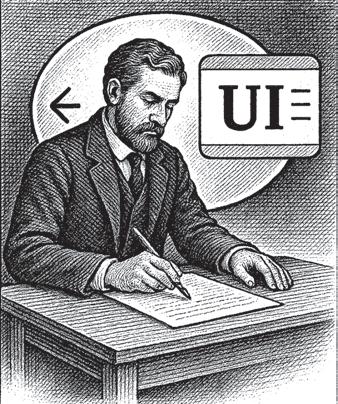
When we write, we govern ourselves.
We work through our worries with words, and through this slow process of composition, we draft a kind of constitution— a controlling document written not on parchment, but in the mind and heart.
Today, very few take the time to write. Why?
Because writing doesn’t change their circumstances— not immediately.
And so, the world’s great narratives are shaped by the few who do.
But that balance is shifting.
Language is becoming leverage. AI has already entered the scene— quietly, powerfully— but soon its abilities will be available to all.
And then, the world will respond to words.
Spoken or written, language will become the interface— the user interface—
UI, as the specialists say. Soon, that abbreviation will be common, because through it, we will achieve whatever we choose.
Composition will become creation.
The pen will not just be mightier than the sword— it will replace the sword entirely.
Those who command language, who have developed the art of clear thought, will become leaders by default.
Translators of intent. Architects of action.
Because in this new era, readers may still be leaders— but writers will rule.

When leadership is based in a clear and consistent philosophy, it becomes possible to build an exceptionally successful team. I’ve experienced this firsthand—not only as a business owner but in many other areas of life. Whenever we sincerely endeavor to adhere to our core beliefs, and we apply those beliefs consistently across circumstances, we create a familiar pattern that others can trust. It becomes predictable—not in a lifeless or mechanical way, but in a way that reassures. People may not always agree with every decision, but they begin to respect the process, because it’s not arbitrary. It’s principled. This isn’t just a business insight—it’s a truth that applies to everyday life. It’s easy to assume that team building is a corporate thing, but really, every time we seek consensus with others, we’re engaged in that same process. Whether we’re organizing a community event, navigating friendships, or sharing a household, we are constantly building informal teams. And just like in business, those teams thrive when leadership is rooted in something more than personality—when it’s based in something consistent, something explainable, something true.
Parenting, in particular, is one of the clearest examples. Raising children to be successful requires long-term team building. And the stakes are even higher, because we’re not just training for tasks— we’re shaping character. If a child only does what they’re supposed to because they fear the consequences, they’ve missed the deeper lesson. If they never learn to adopt the challenge of doing good willfully, if they never develop the internal willpower to choose what is right, then they’ll abandon those expectations the moment the consequences disappear. That’s not discipline; that’s dependence.
True leadership, especially in parenting, invites children into a shared philosophy. It shows them that doing what is right isn’t just a matter of avoiding punishment—it’s a path to strength, integrity, and peace. It’s
a way of life they can adopt for themselves. And when that happens, the need for topdown control diminishes, because they begin to lead themselves.
This is the deeper purpose of inspiration. To inspire someone isn’t merely to make them feel uplifted. That may be a side effect, but it’s not the definition. Real inspiration is when someone hears or sees something that completely shifts their perspective—when the philosophy behind the action becomes clear and applicable to their own life. At any moment, a person should be able to return to that consistent philosophical position, and in applying it, see that it is both advantageous and good. That’s how beliefs become behavior— not through emotion, but through recognition.
And ultimately, this is the goal: leadership that creates more leadership.
When people are part of a team guided by philosophy instead of personality, they’re free to fully adopt the mission without losing their individuality. They don’t need to mimic a leader’s style or temperament— they only need to understand the principles that govern the mission. And through the natural process of anticipation—learning what to expect from leadership that operates predictably—they come to know those principles intimately.
So when their time comes to lead, it’s not some heroic leap into the unknown. They don’t have to conjure up a genius solution or rally others through sheer force of personality. They already know what to do. They simply apply the same philosophy they’ve seen work—earnestly, consistently, and with integrity. Leadership becomes less about commanding others and more about aligning with truth. It becomes something that can be shared, multiplied, and passed down.
And that’s how we build something that lasts.

You can respond to what you’ve read, or write what matters to you.

ABOUT: “Joshua Fryfogle, the owner of The People’s Paper, Make A Scene Magazine, and Liberty, Liberally, is heavily involved in the local community. In addition to creating a monthly paper that prints what community members submit, he also owns 95.5 The Pass, KNLT, one of the only stations in the nation to play local music in regular rotation! Josh is a lifelong singer/songwriter, and serves as booking agent and sound engineer for countless other Alaskan musicians.”

Something that really irks me is the way people in media and government talk about government jobs as if they’re sacred. As if they should never be lost. As if every one of them is somehow more important than the job of the person who pays their salary. There’s a widespread belief that public employees should not only be guaranteed job security, but also be paid more than their private sector equivalents—simply because they work “for the public.” As though that phrase alone justifies excess.
But here’s the problem: the government exists because the private sector exists.Not the other way around. Every dollar spent by the government is a dollar earned, risked, and taxed from the labor of someone who doesn’t work for the government. Yet somehow, the government job has become the stable one—the one with better benefits, guaranteed pensions, and protection from layoffs.
Meanwhile, in the private sector, people get laid off all the time. And we’re told this is a necessary evil. In fact, more than that—it’s a good thing, they say. Layoffs are part of what makes the economy dynamic. They reflect innovation, market shifts, efficiency. Businesses that can’t adapt fail. Employees who no longer fit are let go. It’s creative destruction. Painful, but necessary.
So if we accept that layoffs are sometimes necessary for the health of the economy, then what does it mean that layoffs in government almost never happen? That government jobs are unhealthy for the economy?
Doesn’t that suggest that the government is not serving the same kind of adaptive, evolving function? Doesn’t that mean that their portion of the economy—this enormous, taxpayer-funded structure—is insulated from the very pressures that make the rest of the economy function?
It does. It absolutely does.
Because in a healthy economy, bad ideas die. Inefficient processes get phased out. Obsolete roles disappear. Not in cruelty— but in the name of progress. If you can’t cut what’s no longer working, you can’t grow. But in government, the idea of eliminating a position—any position—is treated like heresy. The assumption seems to be that every government employee is essential, and their job must be protected at all costs.
But ask yourself this: when is the last time you heard of a government agency shrinking? When is the last time someone said, “Actually, we finished the job. We don’t need this office anymore. We’re closing it down.” That virtually never happens. Government doesn’t end programs. It adds new ones. It doesn’t lay off workers. It hires more. It doesn’t adapt—it accumulates.
One notable example is when the Bureau of Prohibition was disbanded, in 1933 after prohibition was undone by the 21st Amendment. The same government employees moved over to this new agency, the FBN. That same year, Harry Anslinger was appointed the first commissioner of a new agency, Federal Bureau of Narcotics. Then they passed the “Marihuana Tax Act”, which made it impossible to grow cannabis. Now, the agencies tasked with cannabis prohibition at the Federal level are bigger than Prohibition-era alcohol enforcement ever was, because it has accumulated and never decreased.
And over time, that accumulation becomes sacred. Not because it’s necessary. Not because it’s efficient. But because it exists. And now it has a union, a pension system, and a constituency who will scream if you try to remove it.
That’s not public service. That’s self-preservation. It’s a jobs program masquerading as governance.
The great irony is that the private sector—the one part of the economy that actually creates value—is expected to be flexible, lean, and accountable. But the government—the one part that’s supposed to serve—has become the only sector where accountability is seen as a threat.
Government should be the most adaptive part of the economy, not the least. It should be capable of shrinking when needed. Of pivoting when wrong. Of admitting inefficiency and correcting it. But instead, it’s the only part of the economy that’s immune to the medicine it prescribes to everyone else.
And when a system protects itself from feedback, it stops being a system of service. It becomes a system of survival. And the moment the servant becomes the master, governance becomes parasitic.
Layoffs aren’t just an economic tool— they’re a form of accountability. If government is truly part of the economy, then it too must be subject to the discipline that drives the rest of us to do better. If not, it becomes a sacred cow—eating the grain, producing nothing, and demanding praise for simply being there.
And here’s the deeper concern: when government jobs offer disproportionate advantages that the private sector doesn’t, they attract the wrong kind of people. Not servants. Not stewards. But opportunists— those seeking security, benefits, and power without risk. When public service becomes a pathway to personal gain instead of public sacrifice, the soul of the republic begins to rot from the inside.
Public service is supposed to be an honor and a sacrifice. That was the deal. You would give up the higher pay and relative freedom of the private sector to serve your community, your country, and the Constitution. You would answer to the people, not insulate yourself from them. But when government becomes a retirement plan with authority, it stops attracting patriots and starts attracting careerists.
And the tragedy doesn’t stop at the paycheck. These bloated salaries and bulletproof benefits aren’t just funded by taxpayers today—they’re paid with money borrowed against the labor of people who haven’t even been born yet. Our government is writing checks that future generations will be forced to cash—without their consent. These public servants aren’t just living off the private sector; they’re living beyond the private sector’s means. They’re not assets. They’re liabilities. Funded by debt. Protected by politics. Justified by spin. And here’s the deeper concern: when government jobs offer disproportionate advantages that the private sector doesn’t, they attract the wrong kind of people. Not servants. Not stewards. But opportunists— those seeking security, benefits, and power without risk.
Contributed by Kimberly Kellar
Save the date and mark your calendar for Friday, August 8, 2025, for this free event with the Alaska Brain Bus, hosted by Valley Charities’ Durable Medical Equipment Lending at their facility located at 1301 S. Seward Meridian Parkway, across from the Walmart parking lot, from 12 p.m. to 4 p.m.
This is an awareness exhibit
to bring hands-on neuroscience education to the Mat-Su Valley, aiming to make brain science accessible and engaging for all ages. The Alaska Brain Bus provides free help for anyone with a brain injury. They will offer education for brain-injured individuals—children and adults—as well as a variety of materials on brain injury prevention, identification, and treatment. For more info on the bus, please visit brainbus.org.
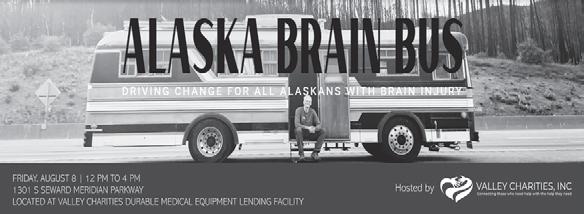
Contributed by Billie Jo Christensen
Nestled in the heart of Wasilla, The Salt Cave of Alaska is now under new ownership and welcoming the Mat-Su community to experience the calming, detoxifying benefits of halotherapy, also known as dry salt therapy. Our man-made cave is located in the Clock Tower and contains 10,000 lbs of Pink Himalayan Salt.
Originating in Eastern Europe and gaining popularity across the globe, halotherapy involves sitting in a room filled with pharmaceutical-grade salt particles dispersed into the air by a specialized halo-generator. These microscopic salt
particles are inhaled deep into the lungs and absorbed through the skin, helping reduce inflammation, clear congestion, and support overall respiratory and immune function.
“People are walking out breathing easier, sleeping better, and feeling more grounded after just a few sessions,” says Lindsey. “It’s gentle, safe, and effective for both adults and kids—and the best part is, you’re just relaxing in a peaceful, spa-like space while your body does the healing.”
Conditions that may benefit from regular salt cave sessions include asthma, allergies, sinus issues, chronic cough and congestion, skin conditions like eczema
and psoriasis, stress, fatigue, and poor sleep. Lindsey explains, “We recently had a new testimony from a customer suffering from low oxygen. He came in at 83% and left the cave after a 45-minute session at 97%. He now comes in two times a week as part of his health care routine.”
The Salt Cave of Alaska offers both private and individual sessions, as well as specialty experiences like sound baths, toddler time, and plans to add massage, reiki/guided meditations, and wellness events—all inside the beautifully designed cave with its glowing Pink Himalayan salt walls and peaceful ambiance. Whether you’re looking to breathe

easier, boost your immunity, or simply take a break from the hustle of everyday life, we have elevated the experience for our customers. This hidden gem is a must-visit for those seeking natural ways to recharge and restore. Come experience the calm at The Salt Cave of Alaska. thesaltcavealaska.com
Contributed by Sierra Winter, Community Relations Manager
On Saturday, August 9, 2025, from 10 a.m. to 3 p.m., Sunshine Community Health Center (Sunshine CHC) invites the public to its Talkeetna Clinic at 34300 Talkeetna Spur Road for its 3rd Annual Community Celebration in recognition of National Health Center Week. Each August, health centers across the country celebrate the critical role they play in building healthier, more vibrant communities. Sunshine CHC is proud to join the celebration with a free event open to all.
tionships, and efforts that define community health.
unit, and traumatic brain injury (TBI) screenings.
Why we celebrate: For over 40 years, Sunshine CHC has provided compassionate, affordable care to residents of the Upper Susitna Valley. But what truly sustains the clinic is the community it serves. This annual event is a chance to say thank you—to press pause and honor the partnerships, rela-
What to expect: With the recent expansion of the Talkeetna Clinic, there’s now more room for fun, connection, and services. The event will include a health resource fair and a festival-style atmosphere featuring food trucks, local vendors and exhibitors, health screenings, kids’ activities, free back-to-school supplies, a blood drive, face painting, a silent auction, mobile mammogram
How to get involved: Local businesses, nonprofits, and artisans are encouraged to participate as vendors. Each vendor is asked to provide a discount and donate an item to the silent auction. Standard booth size is 10x10, with larger setups available by request.
To volunteer or register as a vendor, visit: www.tinyurl.com/ schcevent2025
Celebrating the people behind the care: Community health centers are lifelines—especially in rural Alaska. This celebration is about giving back to the patients, families, neighbors, and friends who make that possible. It’s a chance to check in on your health, discover new resources, and spend a joyful summer day together. We hope to see you August 9 in Talkeetna. Let’s celebrate health. Let’s celebrate community.
Contributed by TOPS Club, Inc.
International Weight-Loss Organization
Announces Leading “Losers” for 2024 TOPS Club, Inc. (Take Off Pounds SensiblySM), the nonprofit weight-loss support organization, is unveiling its “royalty” for 2024. TOPS® royalty are women and men who have officially recorded the largest weight loss from their highest weight at TOPS by the end of 2024 and reached their goal weight, regardless of the time taken to reach their goal. Trina Hunsucker of Wasilla, who lost 106.2 pounds, is the 2024 Alaska Queen. She was honored April 25-26, 2025, at the Alaska recognition event at the Crowne Plaza MidTown in Anchorage. With an individual approach to weight loss and overall wellness, TOPS provides consistent group support, health education, and recognition to encourage successful weight management. Alaska has an adult obesity rate of 35.2%, and in 2024, TOPS members in Alaska lost a cumulative 1,042 pounds.
“All of us affiliated with TOPS are extremely proud of our members’ weight-loss accomplishments,” said Rick Danforth, TOPS President. “Through their TOPS membership, these individuals can commem-
orate their life-changing successes, other members, and those who have preceded them. By continuing their faithfulness to lifestyle alterations, a characteristic of TOPS’ successful formula, TOPS members employ the methods they’re offered and the support of their peers to achieve their weight loss objectives.”
In-person or online weekly meetings are the heart of TOPS support. In-person meetings start with an optional weigh-in, with members then sharing challenges, successes, or goals. A brief program covering a variety of health and wellness topics follows and may conclude with awards and recognition for the week. Visitors can attend their first TOPS in-person meeting free of charge and are encouraged to try more than one chapter since they’re all a little different.
For online membership, meetings are conducted via Zoom and are offered at least five times weekly. The meeting starts with members disclosing challenges, successes, or goals. Next, the online facilitator presents a prepared program that sometimes includes guest speakers sharing expert views on fitness, nutrition, and more. Meetings conclude with action steps
Contributed by Alexander Harmon, Nature’s Remedies (907) 357-4367
For decades, cannabis has been trapped under a cloud of stigma—branded as dangerous, addictive, and socially unacceptable. This judgment has persisted despite growing scientific evidence that cannabis plays a natural and beneficial role in the human body. As we continue to uncover the truth about cannabis and its interaction with our biology, it’s time we rethink our perceptions and start embracing the plant for what it truly is: a powerful, natural tool for healing and wellness.
At the heart of this conversation is something few people even know they have— the endocannabinoid system (ECS). This internal network of receptors, enzymes, and naturally produced cannabinoids helps regulate some of the body’s most vital functions, including mood, appetite,
pain response, sleep, immune system balance, and inflammation. In short, it helps maintain homeostasis, or balance, within the body.
The ECS is composed of CB1 and CB2 receptors, found throughout the brain, central nervous system, immune cells, and organs. The body produces its own cannabinoids, such as anandamide and 2-AG, which bind to these receptors to trigger various physiological responses. However, many factors—stress, diet, lack of sleep, chronic illness—can disrupt this system, leading to imbalances that show up as anxiety, pain, inflammation, or weakened immunity.
This is where phytocannabinoids—plantbased cannabinoids like CBD (cannabidiol) and THC (tetrahydrocannabinol)—come in. These compounds, naturally occurring in cannabis, interact with the ECS and can
related to the presented program.
Membership is affordable, starting at USD 70 per year, plus nominal chapter fees. Join TOPS, visit www. tops.org, or call 800-932-8677 to learn more about TOPS and to find a local chapter.
TOPS Club, Inc. (Take Off Pounds Sensibly) is the original weight-loss support and wellness education organization. Founded in 1948, TOPS is the only nonprofit, noncommercial weight-loss organization of its kind. TOPS promotes successful weight management with a “Real People. Real Weight Loss.” philosophy that combines support from others at weekly chapter meetings, healthy eating, regular exercise, and wellness information.


Today, there are about 65,000 members, including men, women, and international members, who join chapter meetings online, with thousands of chapters in all 50 states and Canada. TOPS also has an online program for people who might prefer that model or who live too far away to attend in-person chapter meetings. Online resources include news and information from the health and inspirational community, meal planning ideas, workouts, chapter resources, and more.
help bring the body back into balance. Unlike synthetic medications that often treat symptoms in isolation, cannabinoids work holistically, supporting the body’s own healing mechanisms.
Unfortunately, due to nearly a century of misinformation and legal restrictions, many people are still hesitant to explore the benefits of cannabis. The stigma runs deep, rooted in politics rather than science. Early 20th-century campaigns painted cannabis as a dangerous drug, overshadowing centuries of its traditional medicinal use. The result? Fear, judgment, and missed opportunities for wellness.
But the tide is turning. Scientists, doctors, and wellness advocates are now validating what ancient cultures have known for generations—cannabis is medicine. From epilepsy and arthritis to anxiety and chronic pain, cannabinoids are proving to be effective, safe, and adaptable to individual needs.
In Alaska, we have a unique opportunity to embrace this plant with both reverence and responsibility. Our long winters, high
Visitors are welcome to attend their first TOPS meeting free of charge. Membership is affordable, starting at $70 USD per year, plus nominal chapter fees. The longer you’re a TOPS member, the more you save through reduced renewal rates. Visit www. tops.org or call 800-932-8677 to learn more about TOPS and to find a local chapter.
rates of seasonal affective disorder, and growing mental health concerns make cannabis-based wellness solutions more relevant than ever. But to move forward, we must let go of the outdated fear and moral judgment that has long surrounded its use. If you’re curious about cannabis and how it may support your wellness journey, it’s essential to seek guidance from professionals who understand the science, not just the sales pitch. That’s exactly what you’ll find at Nature’s Remedies in Wasilla.. We specialize in natural products, but also natural education, with a focus on high-quality cannabinoid products. We take pride in helping our community understand the ECS and choose products that fit their lifestyle, health goals, and comfort level. Let’s stop seeing cannabis as a last resort or a recreational crutch. Let’s start recognizing it as the natural, intelligent plant it is—designed to work with our bodies, not against them. The future of medicine is not synthetic. It’s not always found in a pill. Sometimes, it grows in the soil—green, fragrant, and full of potential.

Contributed by Samantha Sharkoff, Alaska Children’s Trust




My grandmother is a survivor of domestic violence. I choose the word survivor instead of victim because she was able to leave her husband, though it was far from easy. The prevalent culture demanded she stay: so, did her circumstances. Intimate partner violence in the 1970s was not recognized as the issue it is today; there was a culture surrounding it that largely ignored it as a problem and even suggested that it was the woman’s fault. Yet my grandmother made the bold decision to take my mother and flee because of the support she received from her community. Taking jobs from neighbors secretly, she was able to earn enough money to escape and connect with other Greeks on the opposite side of the US so that even with her limited English she would be able to survive apart from him.
The culture around domestic violence has shifted due to the activism of the women’s movement and because of women like my grandmother who took courageous stands to break the cycle: intimate partner violence is now regarded as a crime rather than a private issue, and shelters now exist solely to provide refuge for women in these situations. However, domestic violence is not an issue of the past. Alaska, for instance, has the highest rates of domestic violence in the United States. An intimate partner survey done by the University of Alaska Anchorage found that 57.7% of women reported intimate partner violence, sexual violence, or both in their lifetimes. These numbers are higher for Alaska Native women.
But intimate partner violence is not just a women’s issue: it’s a children’s one. Exposure to domestic abuse – even if the child is not the one being hit – is an Adverse Childhood Experience (ACE) and one which affects their development, putting
children at a higher risk of mental and physical health issues even years down the line. Even if parents think they are hiding the issue, children are perceptive; though they may not see the violence, they hear it – they feel the fear and tension. It should not be solely on the affected partner to act. Alaska has the highest homicide rate for women being killed by men; people often do not stay in adverse situations because of a desire to stay, but for fear of the consequences of leaving. Others may not have the resources to do so, whether it is money, housing, or emotional support. We need to make it safe for victims to ask for help: emotionally and legally. It starts from coming from a place of empathy rather than judgment. For this Child Abuse Prevention Month, take the extra step to connect with domestic violence victims as human beings and connect with their children. Stop punishing victims of intimate partner violence with further shame and isolation – make a connection emotionally and monetarily.
Supporting those affected by intimate partner violence is to support the next generation and prevent the cycle from perpetuating. Making it easier for parents to leave abusive situations with their children, or better yet removing the abusive partner from the home, is the first step in supporting; education and therapy are the next steps. If a child is connected and safe, they can heal.
My grandmother’s bravery in forging a new life for herself away from her abuser shaped the trajectory of not only her life, but my mother’s life and in turn my own. But she could not have done it alone. My grandmother, mother, and I were saved by the kindness of strangers who made it possible for her to leave.
not backed by gold—it is gold. There’s no central bank
17,000





Contributed by Kassandra Rees
On oath is a promise: a solemn, formal declaration or promise to fulfill a pledge. Trust is a firm belief in the integrity, ability, or character of a person or thing; it reflects confidence or reliance in that person or thing.
No oath is more important than the oath of office taken by our elected officials. A violation of an oath is more than just a broken promise – beyond immediate harm, it creates doubt and uncertainty and leads to a loss of trust that other promises and pledges will be upheld. Once trust is broken, that confidence in and reliance on that firm belief of integrity, ability, or character of a person or thing is significantly weakened.
Mistakes are made – humans are, well, human! Promises may be broken, but if the mistake is acknowledged, if lessons are learned, and if harms are mitigated, then trust can be repaired.
December 5, 2022: Gov. Dunleavy renewed his oath of office to “… support and defend the Constitution of the United States of America and the Constitution of
the State of Alaska, and …faithfully discharge my duties as Governor for the State of Alaska to the best of my ability.”
July 3, 2025: the Alaska Beacon reported that Gov. Dunleavy asked some lawmakers to stay away from a special session beginning August 2. Jeff Turner, the governor’s communications director, confirmed the details, first reported by KTUU-TV. “Governor Dunleavy asked House minority members to not show up for the first five days of session because like any governor, he does not want his vetoes overturned,” he said by email.
This was a mistake.
Alaska Constitution: Article II, Section 9, gives the governor the authority to call a special session and requires the legislature to convene for a special session when called and take up matters, such as veto overrides, within the first five days.
Why this is important for this special session (beginning 8/2/2025): The Alaska legislative process on overrides requires a supermajority—45 votes for budget items, 40 for policy bills—meaning an absence effectively counts as a “no” vote. In other words, overriding a veto requires an affirmative vote from legislators in attendance: “Yes, I vote to override this veto.” An absence carries the consequence of a “NO”
vote – “No, by my absence, I am effectively saying that I’m not bothering to come in, so clearly, I do not want to override this veto.”
In this special session, the veto in question concerns educational funding for Alaska’s future. HB57’s funding for a permanent BSA boost supports accountability and equity for our children’s education, particularly for rural and underfunded districts, and aligns with bipartisan priorities. Why this is important for governance in general: What if the Governor called a special session and NONE of the Representatives bothered to answer the call? Or what if the Representatives showed up, but the Governor didn’t? Clearly, this would be chaos and not acceptable to The People of Alaska. By calling a special session, the legal requirement is that the Representatives must answer the call. Beyond simple common sense, it is written in the Alaska Constitution, and is therefore, law.
Each elected government official is duty bound to uphold his/her oath as a Representative of The People - their promise and pledge to “faithfully discharge their duties” as written in the Alaska Constitution. Being “asked” to not show up to do their duty was a mistake by the Governor. House
Representatives must decline that request and attend, beginning 08/02/2025, as required by law, in order to not compound that mistake.
We the People are responsible for 1) becoming aware of evolving situations and actively engaging with our Representatives in our own governance, 2) electing people who are capable of doing the job and who are cognizant of their important duties and responsibilities in their service to The People, and 3) speaking up to ensure understanding and bolster accountability for more effective governance.
Our job: to take our responsibilities in our own governance seriously! Participate, become knowledgeable on policies and procedures, then make your voices heard – call, write, email your Representatives, and assist them in upholding their duties as written in the Constitution.
Our Representatives’ job: to keep their promise to faithfully discharge their duties. Beginning on August 2, they are legally required to attend this special session, particularly the first five days, to fulfill their duties and accomplish the hard work of taking care of all their constituents as they were elected to do.
Contributed by Rep. David Eastman
On Monday, Rep. Mark Green announced his resignation from Congress, which will shrink the current Republican House Majority from 220 to 219, leaving Republicans a razor-thin two vote majority. Meanwhile, the left is currently instigating riots in Los Angeles and Atlanta in an effort to eliminate that majority for good.
The Federation for American Immigration Reform estimates that there are 18,600,000 illegal immigrants in the United States today. The battle to keep them here is now being waged visibly on the streets of Los Angeles and is projected to spread elsewhere by the time you are reading this.
Under the Biden administration, Democrats welcomed more than 4 million illegal immigrants into the United States. At this point it is simply a question of math. How many of these 18 million remain in the US is set to determine whether the Democratic Party takes control of Congress indefinitely, following the next census.
If you divide 18,600,000 illegal immigrants by the amount of population needed for a state to gain a new seat in Congress, you find that this number reflects over two dozen seats in Congress, more than enough to grant perpetual
control of Congress to the Democratic Party, even if none of the 18.6 million ever attempt to vote.
Also, because the number of seats in Congress doesn’t change, for one state to gain a seat, it must be taken from another state. This means that the number of seats actually impacted by illegal immigration will be a great deal larger than two dozen. In the last census, New York lost a congressional seat because it was short only 89 bodies. If 89 more bodies had shown up in the New York census, New York would now have 29 seats in Congress instead of only 28.
Likewise, Oregon gained a congressional seat in the last census even though the state itself (even counting illegal immigrants) was still 325,000 bodies short of filling another seat. Essentially, its status as a sanctuary state gave Oregon just enough bodies for one extra congressional seat and gave the Democratic Party one extra vote for president, for the next ten years.
There are currently 11 officially designated sanctuary states (e.g. California, Washington, Oregon, Colorado, New York, etc.). While many sanctuary jurisdictions have seen crime increase dramatically, there is a method to the madness in Los Angeles, Seattle, Portland, Denver, and
elsewhere.
Yes, politicians in Los Angeles are witnessing the standard of living in their communities fall, but the ultimate outcome of all this will be perpetual power to the left at the national level. For many on the left, that incentive is worth the riots, the looting, the arson, the bad publicity, and for some, even the risk of a little jail time.
If the riots in Los Angeles are successful in delaying deportations, New York (and other sanctuary states) will have no trouble finding the bodies needed to gain those extra Democrat seats in Congress, and those extra electoral votes for future Democrat presidents. This is why sanctuary status has become a religious dogma for Democrat politicians in Democrat states.
While Alaska isn’t at risk of losing a congressional seat (we already have the bare minimum our state is guaranteed under the Constitution), the outcome of the war being waged in Los Angeles will impact the degree to which we remain a nation dedicated to the rule of law. If those perpetuating the insurrection in Los Angeles are able to succeed in overthrowing the rule of law in California, that victory will not only impact future elections but will also impact our efforts to defend the rule of law here in Alaska as well as every other
part of the country.
Likewise, if the federal government abandons the rule of law in its effort to quell the insurrection and protect the integrity of future elections, any missteps now will almost certainly be capitalized upon by future administrations, which will also impact our efforts to defend the rule of law here in Alaska as well as every other part of the country. That’s what Marxist revolutions are designed to do. If they can’t supplant the Constitution and the rule of law directly through insurrection, they aim to supplant it indirectly through the government’s response to the insurrection.
It is for this reason that patriotic Americans must never succumb to the temptation to support one party or administration circumventing the rule of law in their efforts to defeat the other. Our nation faces a true crisis. Let us be earnest in our prayers that, by God’s grace, we come through it intact and are more resilient as a nation for having done so.
Rep. David Eastman represented the Mat-Su Valley in the Alaska House of Representatives from January 2017 to January 2025. Visit davideastman.org for more information.
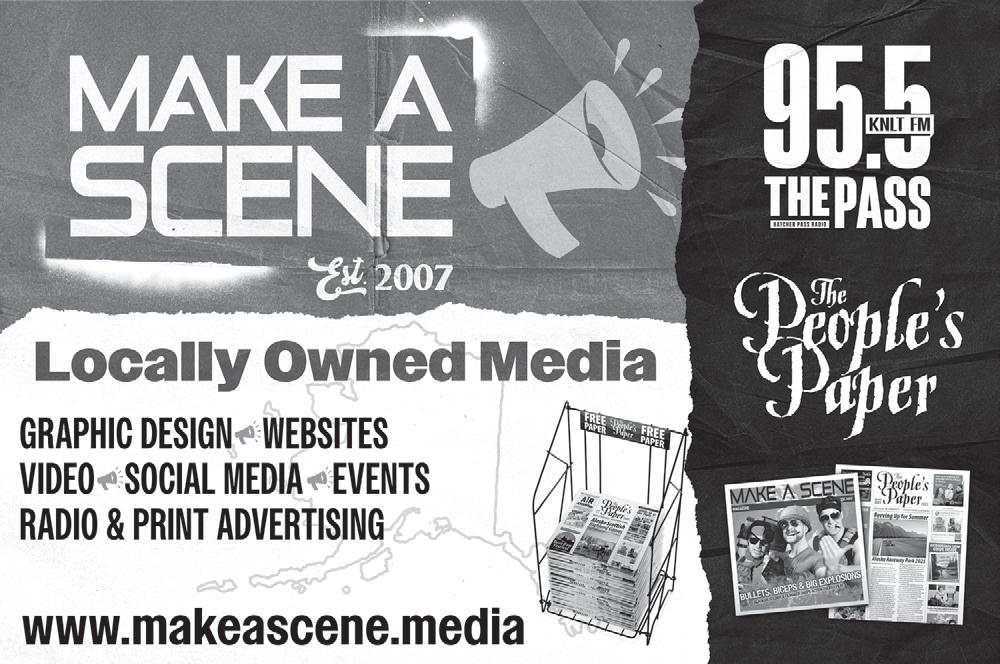



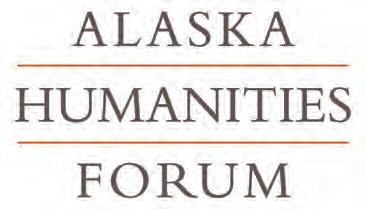






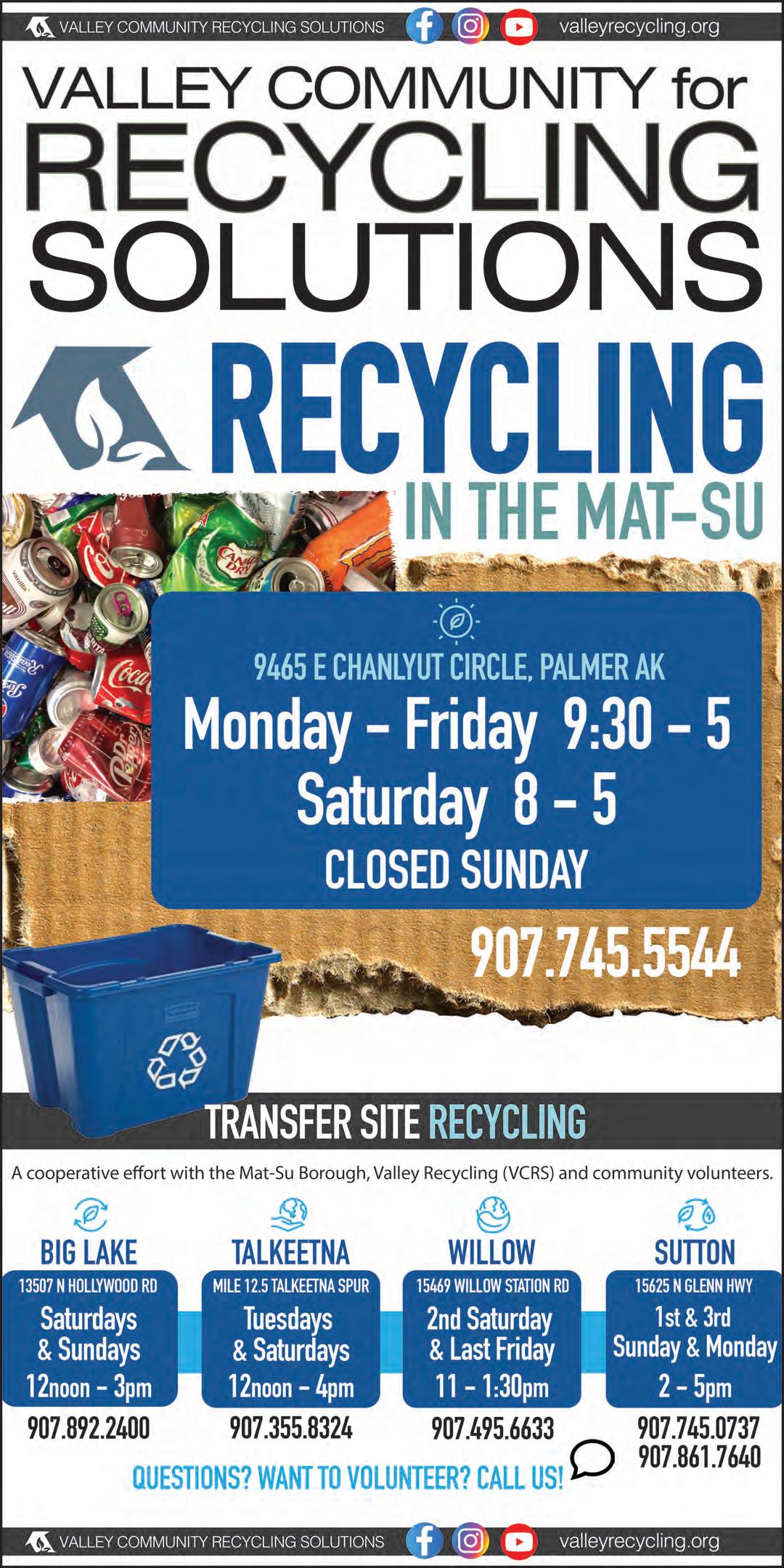



















































I am a confident, curious, and very beautiful calico girl who is about two years old.
I waste no time exploring my environment or getting to know my roommates. I make it my duty to survey every inch of my domain, including inside cabinets, drawers, and closets. I greet my cat roommates with cool confidence that puts the most skeptical of residents at ease. When it comes to humans, I currently prefer women but, with

I’m a charming 9-month-old kitty ready to find my forever home! I’m the softest kitty ever. I’m a bit shy when we first meet, but once I warm up, I melt for attention and love a good cuddle session.
Calling all animal shelters, rescues, and vet clinics — Paws for Justice, a local community initiative sponsored by Crowson Law, wants to partner with you! We’re building a community campaign to help local pets find loving homes. Local organizations will feature the adoptable pets in the pages of The People’s Paper and on the airwaves of 95.5 The Pass KNLT-FM—and we’ll help coordinate free adoption events, promote them, and cover adoption costs or other services to help our furry friends find forever homes.
To learn more about Paws for Justice or to sign up to help today - call (907) 373-2698. That’s 3732698. Brought to you by Crowson Law Group— defending the injured and giving Alaska’s rescue pets a voice. Visit crowsonlaw.com to learn more.
some patience and persuasion, I become more comfortable with men.
My love language is headbutts, which will be given frequently and forcefully in my quest for all your attention. I have some “Velcro kitty” tendencies and would love for you to pet me nonstop...but I will settle for a cozy spot next to you if I must. I enjoy supervising my humans in all their work,
Toys, lounging in the sun, and a few zoomies through the house make for a fun day for me. I’m a true social butterfly when it comes to other felines and get along great with other cats, so I will need a kitty friend in my new home. I’m also perfectly fine sharing my space with a nice dog.
especially if I can rub my face on a laptop. I will need a safe outdoor area to fully exercise my curiosity and have shown a great interest in string/ribbon toys. I would like a kitty friend in my new home and am fine with a respectable dog. I think I would like to be picked up and held, but tend to splay my claws when uncomfortable, so older children would be best.
Contributed by Kelleigh Orthmann
I prefer a calmer environment, so a home without young children would likely be the best fit. I’ll also need a safe, fun yard filled with grass and bugs to chase. If you’re looking for a gentle, loving cat who will blossom with patience and affection, I might just be your perfect match.













Contributed by Alaska Wildbird Rehabilitation Center
Robins are altricial, with an incubation period of 12–14 days. They stay in the nest for 9–16 days, fledge at about ¾ the size of an adult, cannot fly when they leave the nest, and are independent after 31–45 days. Swallows are also altricial, with an incubation of 11–20 days. They stay in the nest 15–25 days, are full size at fledge, can fly when they leave




the nest, and are independent by 25–30 days. Mallards are precocial, incubate for 23–30 days, leave the nest within 13–16 hours, are full size, cannot fly at fledge, and are independent by 50–60 days. Ravens, also altricial, incubate 20–25 days, remain in the nest 28–50 days, are full size at fledge, cannot fly, and are independent at about 6 months. Altricial: born in a helpless state, needing parental care for nourishment, protection, and

warmth (i.e. humans, bunnies, cats, dogs and a lot of birds).
Precocial: young are relatively mature and mobile, able to feed themselves and move around soon after birth (i.e. snowshoe hare, ducks, moose).
This does not mean they do not require something from their parents—in mammals, they require milk, and most precocial young receive protection, warmth and knowledge from their parent(s). Not all birds that fledge are

Contributed by Angie Lewis,
for
and
them under
and try
Make sure your dog has plenty of water and shade to help her remain cool and hydrated. Hiking with your dog is a wonderful experience for both of you, but limit exercise on really hot days, especially for older dogs or those with thick coats; provide enough rest time and ample water, and remember, asphalt can get hot enough to burn your dog’s paws. Not all dogs are natural-born swimmers and can easily drown—monitor your dog near lakes to be sure of her swimming ability, and be cautious about beavers, which can be very dangerous to dogs. Fleas and ticks are not as
incapable of flight. Several species (swallows, swifts, martins) can fly when they fledge. The best thing we can do during this time is keep pet cats inside, in a catio, or on a harness. Cats are natural hunters and will easily catch a fledgling bird. Don’t be fooled—cats eat birds, not just mice. Dogs may also pick up young birds, and even if not bitten, the bird may be stressed and covered in saliva. Please call us if you see a bird in need. We’ll assess the situation and may ask you to text a photo and location. Unless the bird is in clear danger (ducklings in the road, a gull with a bloody wing), call before intervening. Remember—it’s a bird-eat-bird world, and all birds must feed themselves and their young. More info and HOTLINE: 907-892-AWBR (2927) or visit akwildbird.org
big a problem in Alaska as in other areas, but if you use treatments, check with your vet—some over-the-counter products can be toxic even when used as directed. Be mindful when taking your dog to summer events like concerts or fairs; these situations can be stressful and increase the risk of your dog getting lost. Know what your dog can handle. Some dogs are very frightened by fireworks or firearms—keep them inside during loud celebrations; some may even need medication to help them cope. Make sure your dog is microchipped and that the contact info is up to date. Your dog should also wear a collar with an ID tag. Now go out and enjoy your summer, along with your dog friend—but do it safely.



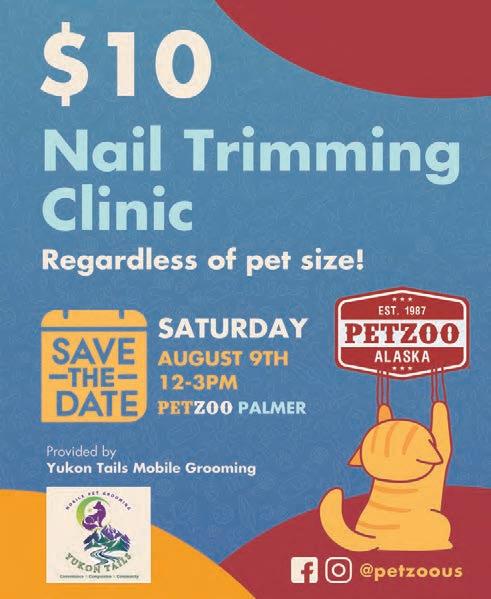

BY RAISING AWARENESS THROUGH EDUCATIONAL PROGRAMS RELATED TO ALL OFF-HIGHWAY VEHICLES, LIKE THOSE PROVIDED BY ALASKA SAFE RIDERS, WE CAN WORK TOGETHER TOWARD ENDING PREVENTABLE INJURIES AND DEATHS RELATED TO THE OPERATION OF THESE VEHICLES IN ALASKA.

ALASKA RANKS NUMBER ONE IN THE NATION PER CAPITA FOR ATV RELATED UNINTENTIONAL INJURIES AND DEATHS?






